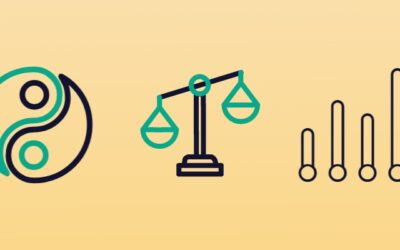From time to time, a new trend dominates the marketing industry. For example, the “spray and pray” method led the way for a long time before more sophisticated methods were introduced. This method relied on all-encompassing advertising without precise personalization or market segmentation.
Today, your customers want personalised advertisements. Old methods can no longer work; you need to develop new strategies and use market-proven tactics to sustain your marketing efforts. Customer segmentation is the ideal way to identify your target audience and focus on their needs and interests.
However, customer segmentation is more than just a nice-to-have addition to marketing campaigns; it’s an established reality, and you need to take advantage of all the tools and software you can use to improve customer segmentation. Below, we will explore this concept to see how you can use it to boost your marketing efforts.

What Is Customer Segmentation?
Customer segmentation refers to the process of dividing audiences into different groups or “segments.” Segmentation is based on behavioural patterns and common characteristics such as education, buying habits, nationality, and so on.
The purpose of using customer segmentation models is first to understand the type of audience and prospects you should be targeting. These insights come from extensive and in-depth market research and become an integral part of marketing campaigns.
Regardless of the media you use – newspapers, emails, social media platforms, etc. – segmentation plays a key role in reaching new audiences more effectively and re-engaging lost customers. In short, customer segmentation is about delivering the right message to the right people.
Types of Segmentation
The development of customer and market segmentation models in recent years shows a fascinating advance in audience targeting. Each model describes different aspects of customer groups. Here are the top 5 models you should know about:
Behavioural Segmentation
Behavioural Segmentation refers to sorting and grouping audiences based on their exhibited behaviours. These behaviours include the types of products and content they prefer and the way they interact with the product, website, app, etc.
Demographic Segmentation
Demographic segmentation divides customers and prospects according to certain characteristics such as age, gender, education, income, marital status, and occupation. This segmentation model plays an essential role in market research. Whether you are launching a new product or introducing new services, you need this data to achieve better results.
Geographic Segmentation
Geographic segmentation is another widely used model that targets individuals located in a specific geographic area. For local companies, geographic segmentation is pretty much a no-brainer. But large companies also use this model because people who live in the same place most often have similar needs, wants, and cultural considerations.
Psychographic Segmentation
Psychographic segmentation divides audiences into distinct segments based on characteristics that influence buying behaviour, including beliefs, values, lifestyle, social status, opinions, activities, motivations, and priorities.
Psychographic segmentation complements demographic segmentation and enables brands to target their audiences with the right tone of voice and content. Psychographic segmentation is extremely difficult because the data required for this model usually comes from psychographic surveys and people are reluctant to reveal such personal information.
Firmographic Segmentation
Firmographic segmentation is the process of analysing B2B audiences and grouping them based on common company or organisational characteristics. Rather than using segmentation information to know target groups, this practice focuses on understanding large clients, company size, geographic location, associations, etc.

Benefits of Segmentation
Customer and market segmentation is an ever-growing practice in marketing. The numerous advantages of segmentation are no secret anymore. Here are 4 of them:
Increased Competitiveness
Focusing on specific customer groups will inevitably increase your competitive edge in a niche market. For example, if you focus the majority of your attention and investment on young, educated people, you will naturally build strong brand loyalty among this subset of prospects.
This will help you differentiate yourself from competitors in the same industry. Also, your market share will grow over time as you target specific groups. Running test campaigns can help you identify more likely-to-convert subgroups and build effective communication with them.
Cost-Efficiency
A marketing campaign can cost you a fortune. However, if you run research-based campaigns designed specifically for certain groups, you can prioritise the customer segments that are more likely to engage and convert.
This approach is completely different from traditional blind targeting. With customer segmentation, you avoid spreading resources evenly across all segments. You focus only on prospects who appreciate the value of your products.
Develop Consumer Insights
Customer segmentation relies heavily on collecting actionable insights, regular assessments of business performance, and ongoing market research. All of these processes serve one goal: to help you know your customers.
In a sense, marketing is not about how you can sell more but what you can offer customers. Every product is a solution to a need. Otherwise, people will not be interested in using your products. Customer intelligence allows you to put yourself in your customers’ shoes and understand what they want. This way, you can find the right answer to their problems.
Building Brand Awareness
When you know someone, it’s easier to communicate with them and build a lasting relationship. Customer segmentation follows the same socialisation rule. When you know your audience, you can most effectively represent your brand. Leveraging this knowledge is critical to improving brand image.
Personalised advertising is an incredibly effective tactic today. People who receive something crafted specifically for them feel more comfortable buying from your brand. They subconsciously feel that you care about their needs.
How to Start Customer Segmentation?
There are many ways to approach Segmentation, but these steps can help your team avoid some pitfalls along the way:
#1 Set Your Goals
You may already have a rough picture of your customer segmentation in sales and social media marketing. However, creating customer personas to solve specific problems is challenging. The first step is to determine the value of segmentation to your brand.
Your goal may be to increase profitability, improve product fit for repeat purchases, or improve online communications and customer support. Identifying the most important value of customer segmentation will help you develop better strategies later.
#2 Prioritise Segments
Once you have established your customer segmentation’s goal and general scheme, it’s time to prioritise the individual groups (customer personas). The segments that contribute the most to achieving your goals will naturally receive more attention and investment.
You must also break down the general objectives into SMART goals specific to each segment. The goal of marketing to one customer group may be to increase brand awareness and educate them about your brand’s values. For another segment, the goal may be to strengthen customer retention by informing them about your new product.
#3 Add Context
Adding context means building a solid customer database that helps shape your brand message. While some customer data is readily available through various tools, others require a lot of time and intensive research. You’ll also need a professional team to turn the raw data into action plans and help different teams and departments understand their roles.
There are several ways to collect this data. But remember, you don’t have all the information in the world to run a marketing campaign. The right type of data is determined based on your initial objectives. You can use surveys, social listening, traffic monitoring, email questionnaires, and other methods to connect with your audience and gather relevant information.
#4 Target User Segments
Once the initial steps have been taken, it’s time for marketing and putting all the information into practice. The core principle of customer segmentation is to put them at the centre of your marketing efforts. Ask yourself what content and products will each target audience value most. Once that’s clarified, you’ll need a unique strategy to engage with each group.
Remember that minor differences in content aren’t enough to achieve your goals. A unique strategy means a specific action plan that enhances each customer segment’s experience. Personalised emails, tailored customer support services, and segment-specific content are just a few methods you can use.
#5 Evaluate the Segmentation
Like any other marketing effort, customer segmentation requires continuous assessment to identify gaps and weaknesses in strategy or implementation. In addition, markets and your target audiences are in a constant state of change. Segments that previously received more attention and investment may be replaced by a new customer group.
In most cases, the personas that interact with your brand remain relatively constant. However, their importance changes as your business grows. In addition, targeting a segment with a different method may be necessary when previous efforts prove ineffective.

Best Software & Tools for Customer & Market Segmentation
When it comes to customer and market segmentation, there are many software, tools, and websites you can use. Here are four of the most popular to get you started:
Kissmetrics is a marketing analytics tool that most SaaS and eCommerce companies use today. It allows you to build segments based on different behavioural patterns and traits of your audience groups.
Baremetrics is another powerful tool with a powerful segmentation dashboard packed with tons of customised features. You can integrate Baremetrics with different tracking tools to get automatic updates on your segment analytics.
HubSpot has well-established marketing software that allows event-based customer segmentation. This is an excellent feature if you want to analyse current purchasing trends and connect them to real-time events.
Experian segmentation software offers numerous functions you can use to improve your marketing. This software is primarily based on lifestyle segmentation and dividing audience groups based on their habits and preferences.
Bottom Line
Customer segmentation helps you save time and money, generate quality leads and improve conversions. It’s an incredibly powerful way to approach your customers with tailored solutions and let them know you care about their unique personalities.
But remember that Segmentation requires deep knowledge of the market niche, thorough competitive research and full command over different marketing methods and tactics. Our professional team at Broadweb can help. Reach out to us today!









